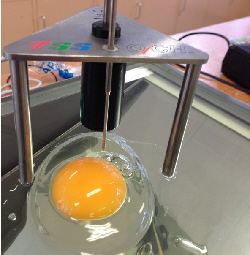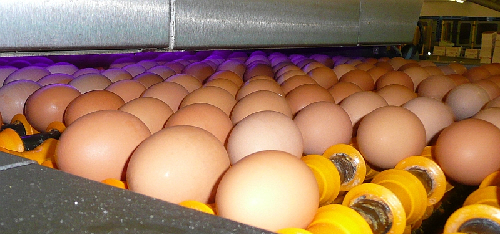



How Fresh Are Your Eggs? Using Albumen Degradation to Indicate Egg Freshness
Dr Jeff Downing, Senior Lecture in the Faculty of Veterinary Science at The University of Sydney, has a new Poultry CRC project entitled 'Proteomic measures of albumen degradation as indicators of egg freshness'.Working with Associate Professor Paul Sheehy, the Poultry CRC project will investigate the changes in proteins found in egg albumen associated with time and temperature, according to Poultry Hub from Poultry CRC. In addition, hen stress will be examined pertaining to egg quality.

Providing high quality eggs and egg products is crucial to the sustainable economic viability of the Australian egg industry. A review of surveys conducted in the EU indicated that shell strength, albumen consistency and yolk colour are the main measures of quality important to consumers (Hernandez, 2006). Interestingly, measures of food safety, hygiene and egg freshness ranked higher in importance than the production system used to produce the eggs. Therefore, guaranteeing quality is essential to meeting consumer expectations.
Dr Downing explained: “Currently, the main measures of egg freshness are based on determining physical attributes of egg albumen. These have included Haugh units (HU), albumen and yolk height, pH changes and various ratios of albumen and yolk. To a large degree, most are related to the thinning of the albumen and are evident sometime after lay, depending primarily on storage time and temperature.
“Albumen thinning involves changes in the protein structure, beginning immediately after lay. These protein changes will occur before any discernible change in the physical measures of quality such as Haugh units.
“Investigating the changes in proteins found in egg albumen should provide a more precise measure of egg freshness and in a much earlier time-frame. Specific changes in the albumen proteome (that is, the complete set of proteins found in an egg’s albumen) could be used as ‘biomarkers’ of protein degradation and be associated with the degree of egg freshness,” said Dr Downing.
The overarching objectives of this research are to:
- provide a detailed understanding of the albumen proteome changes associated with a deterioration in egg freshness
- evaluate feasibility of developing a rapid field test (biomarker) for egg freshness based on changes in the albumen proteome
- utilise an understanding of these albumen proteome changes to consider the feasibility of developing practice or protocols to enhance egg shelf life or persistence of egg freshness, and
- develop an understanding of how stress influences egg quality and freshness.
While there is sufficient evidence that storage time and temperature markedly influence albumen quality, the role stress plays is unknown, although some indirect evidence suggests that it could be very important.
Recent work by Dr Downing (2012), funded by the Australian Egg Corporation Ltd (AECL), indicated that egg production and hatchability are strongly correlated with corticosterone concentrations in egg albumen. This work identified significant differences in the stress status of different farms, seemingly independent of the production system being used.
This latest project will also integrate some of the egg collection protocols of CRC project, 'A new test for the measure of poultry welfare' with the object of improving the understanding of the relationship between stress and production, and the role stress has on egg quality during storage as assessed by proteomic analysis.
While Dr Downing’s latest project will investigate the effects of stress on egg freshness, it will also further develop the concept that stress measures are relevant to welfare assessment of laying hens.
He explained: “Reliance on subjective measures of welfare is not an adequate means of assessment.
“Ideally, objective welfare assessment provides a stronger scientific approach. These objective measures are required for egg producers to demonstrate that their management and production systems provide good welfare for hens. Stress remains a significant welfare consideration but the pattern of stress over time is the real measure of the conditions experienced by hens. The non-invasive measure of stress (corticosterone) in eggs supports such evaluation procedures.
“There has always been debate about the value of using egg production as measure of stress. Further validation of the relationship between stress and production and mortality would allow the industry to use performance as valid measure of welfare. Production of eggs in a socially acceptable welfare manner will be a determinant of industry sustainability,” Dr Downing added.
A definitive link between stress and egg quality would demonstrate the benefit of good husbandry practises to minimise hen stress for producers. The development of a diagnostic tool for egg freshness is the practicable goal from research generated by this project.

January 2014











